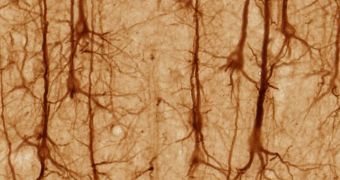Investigators from the University of California in Los Angeles (UCLA) have determined that the efficiency with which we remember things is directly correlated to the frequency our brain waves operate at when we are exposed to the new data, scenarios, people, emotions or places.
This is the first time such a study is conducted, and its results are bound to cause controversies for years to come. The idea in itself is simple, yet remarkable – people do not recall information in the same patterns, and now experts know one of the mechanisms involved.
Neurons in our brain operate at several frequencies at the same, depending on which section of the cortex you isolate and analyze. However, these so-called neural rhythms tend to change depending on what we do. For instance, they are very different during sleep from when we're conscious.
One of the main implications for this study is that each person has an optimal neural frequency at which they store information and experiences most efficiently. The way these frequencies work is by influencing the strengthening of synapses in memory neurons to various degrees.
Neurophysicists at UCLA say that each type of neural connection is tuned so that it operates best at a certain neural wave pattern. When that pattern is not detected, the connection still works, but the risk of falter or failure increases proportionally, PsychCentral reports.
Details of the new investigation were published in the latest issue of the medical journal Frontiers in Computational Neuroscience. “Many people have learning and memory disorders, and beyond that group, most of us are not Einstein or Mozart,” Mayank R. Mehta, PhD, explains.
“Our work suggests that some problems with learning and memory are caused by synapses not being tuned to the right frequency,” adds the UCLA investigator, who was also the senior author of the paper.
“To our surprise, we found that beyond the optimal frequency, synaptic strengthening actually declined as the frequencies got higher,” says the scientist, who conducted the investigation with UCLA colleague and study coauthor Arvind Kumar, PhD.
One possible application for the new findings would be to develop ways of using drugs or electrical stimulation techniques to bring brain waves to the correct frequency for each individual. This could address a series of mental health problems, but also help people learn more, and pay more attention.
“We already know there are drugs and electrical stimuli that can alter brain rhythms. Our findings suggest that we can use these tools to deliver the optimal brain rhythm to targeted connections to enhance learning,” Mehta explains.

 14 DAY TRIAL //
14 DAY TRIAL //